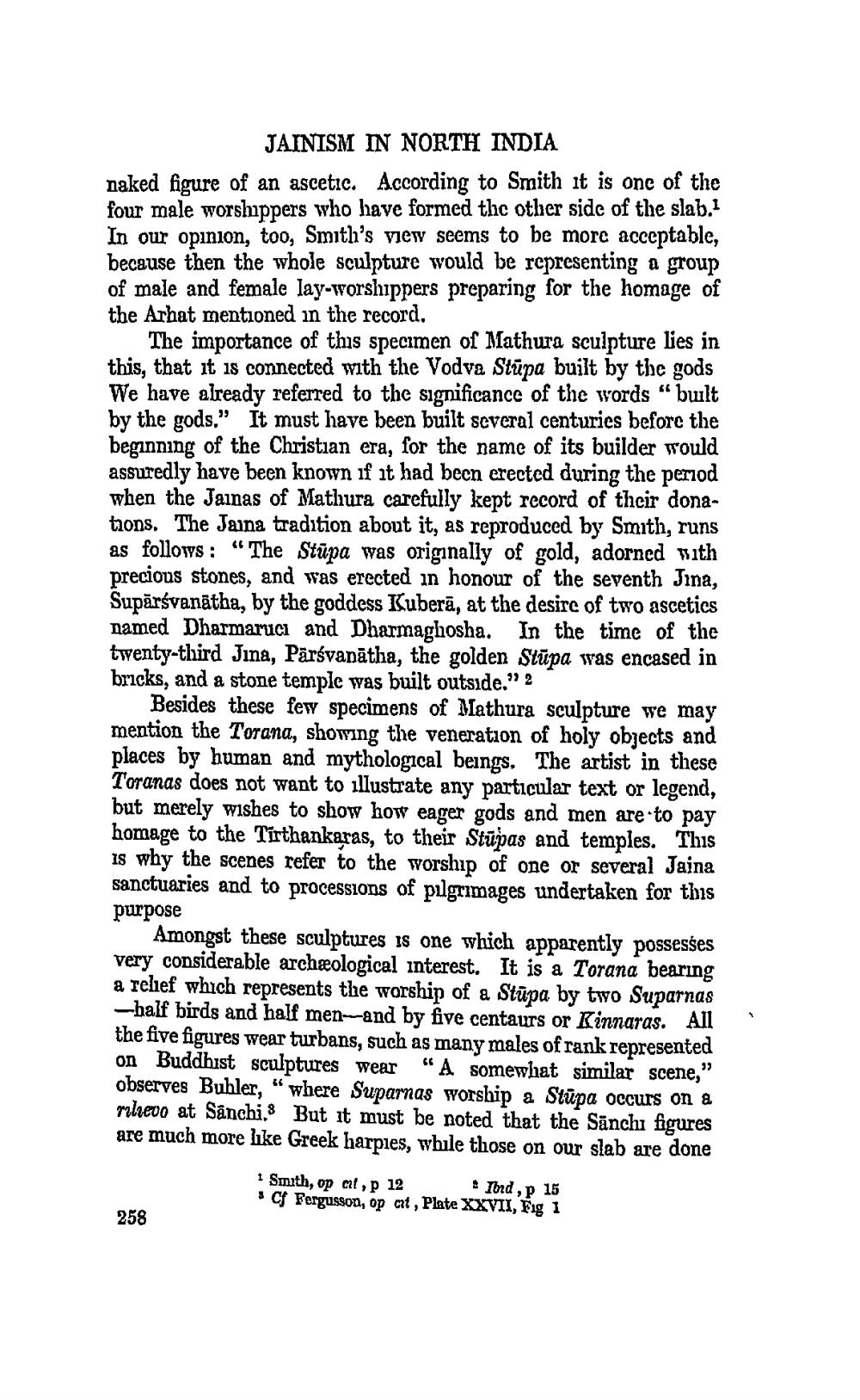________________ bllows : " hond Fas erectetubera, at the JAINISM IN NORTH INDIA naked figure of an ascetic. According to Smith it is one of the four male worshippers who have formed the other side of the slab. In our opinion, too, Smith's view seems to be more acceptable, because then the whole sculpture would be representing a group of male and female lay-worshippers preparing for the homage of the Arhat mentioned in the record. The importance of this specimen of Mathura sculpture lies in this, that it is connected with the Vodva Stupa built by the gods We have already referred to the significance of the words "bult by the gods." It must have been built several centuries before the beginning of the Christian era, for the name of its builder would assuredly have been known if it had been crected during the period when the Jainas of Mathura carefully kept record of their donations. The Jaina tradition about it, as reproduced by Smith, runs as follows: "The Stupa was originally of gold, adorned with precious stones, and was erected in honour of the seventh Jia, Suparsvanatha, by the goddess Kubera, at the desire of two ascetics named Dharmaruc and Dharmaghosha. In the time of the twenty-third Jina, Parsvanatha, the golden Stupa was encased in bricks, and a stone temple was built outside." Besides these few specimens of Mathura sculpture we may mention the Torana, showing the veneration of holy objects and places by human and mythological beings. The artist in these Toranas does not want to illustrate any particular text or legend, but merely wishes to show how eager gods and men are to pay homage to the Tirthankaras, to their Stupas and temples. This 18 why the scenes refer to the worship of one or several Jaina sanctuaries and to processions of pilgrimages undertaken for this purpose Amongst these sculptures is one which apparently possesses very considerable archaeological interest. It is a Torana bearing a relief which represents the worship of a Stupa by two Suparnas -half birds and half men--and by five centaurs or Kinnaras. All the five figures wear turbans, such as many males of rank represented on Buddhist sculptures wear "A somewhat similar scene," observes Buhler," where Suparnas worship a Stupa occurs on a mlievo at Sanchi, But it must be noted that the Sanchi figures are much more like Greek harpies, while those on our slab are done 1 Smith, op al,p 12 Tord , p 15 "C Fergusson, op at, Plate XXVII, Fig 1 258




